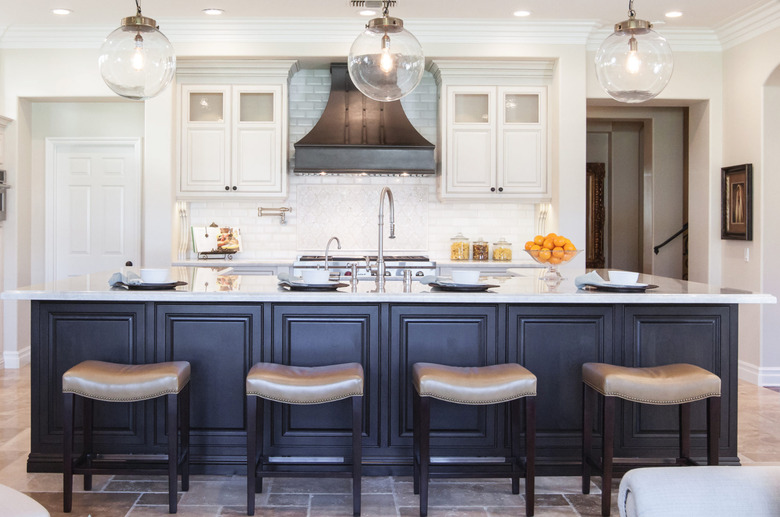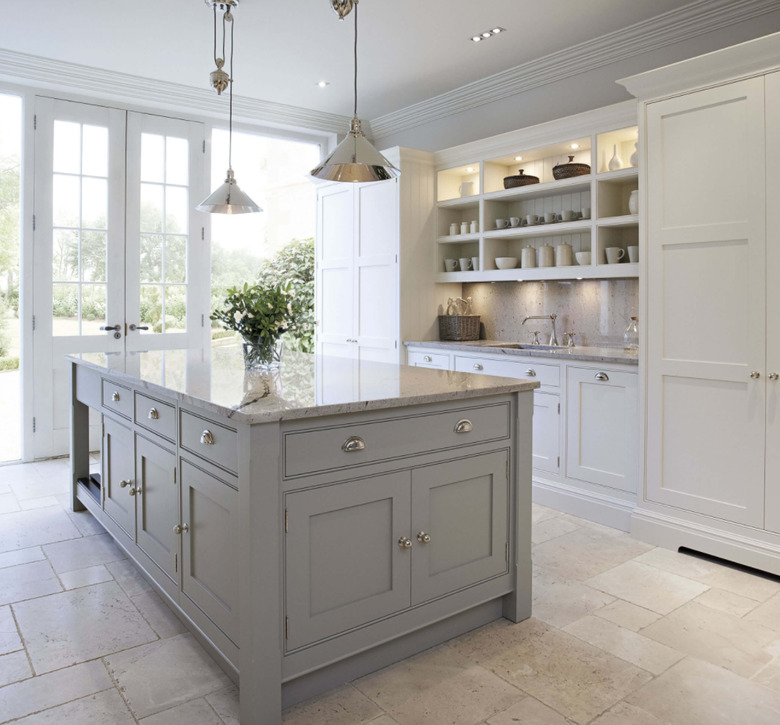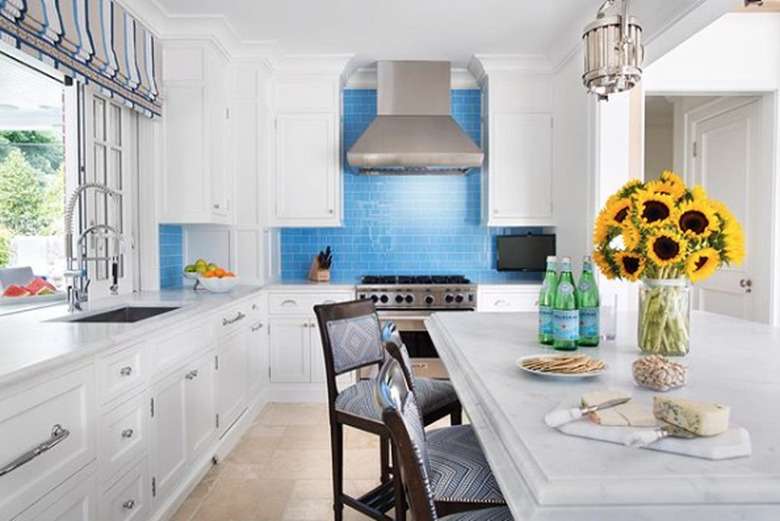Travertine Kitchen Flooring Has Piqued Our Interest And This Is Why
With such an abundance of options available these days (wood, cement tile, linoleum, slate, just to name a few) selecting flooring for what most consider to be the most important room in the house — the kitchen — can be an overwhelming proposition. But before you throw in the towel, let us introduce you to travertine. It has been around for thousands of years and has recently piqued our interest as a highly versatile kitchen flooring option. Read on to learn all there is to love about travertine.
First things first ...
What Is Travertine?
What Is Travertine?
Travertine is a type of limestone originating in Italy; the name travertine actually relates to the Tibur River. It's been used in Italian construction for centuries, literally, including Roman bathhouses, gardens, and the Colosseum. So, we figure if it was good enough for the Roman Empire, it must be good enough for us, too!
Travertine is a natural stone that forms around mineral spring deposits through the accumulation of sediment over many years. One of its defining characteristics is the appearance of pitted holes and troughs on its surface, which give it lots of texture and personality. It's available in an array of earth tones from cream to brown to rust, as well as a variety of finishes, which make it well-suited for use in a range of design styles from farmhouse to modern. For example, travertine that's been polished and had its trademark pits filled looks sleek and contemporary, while lightly tumbled travertine has a more rustic and country vibe.
Travertine is extremely durable and hard, making it an excellent option for flooring in high-traffic areas like the kitchen. It's installed in tile form and pavers, which can be configured into various patterns depending on your aesthetic. Like any natural stone, despite its strength, travertine is susceptible to wear and tear and can crack over time, but the silver lining here is that individual travertine tiles are relatively easy to replace. Note: it's always a good idea to buy extra tile so you have it on hand if cracks occur down the road — this way, color-matching won't be an issue.
Travertine Kitchen Flooring Maintenance
Travertine Kitchen Flooring Maintenance
You've heard it here before: natural stone — like marble, granite, and soapstone — is porous and requires more diligence, care, and upkeep than engineered or manufactured stone. Travertine is highly porous and the naturally occurring holes on the surface can grow and tear, but keep in mind that you can professionally fill the holes to prevent further visible damage. It's extremely reactive to acidic substances and can stain if it comes into contact with liquids like vinegar, lemon juice, and orange juice, so you'll want to wipe up spills right away. Polished travertine — which means the surface holes have been buffed out — is more durable and doesn't need to be sealed. Honed or tumbled travertine, however, should be professionally sealed upon installation and every two to three years after that, particularly when it will be exposed to food and liquid.
On a day-to-day basis, travertine is easy to care for and can be cleaned with mild soap, warm water, and a mop (stay away from acidic cleaners).
Cost of Travertine Kitchen Flooring
Cost of Travertine Kitchen Flooring
The overall cost of travertine tile is lower than marble and granite, with an average minimum price tag around $3 per square foot and up to $20 per square foot.
Pros of Travertine Kitchen Flooring
Pros of Travertine Kitchen Flooring
Travertine is a very versatile natural stone flooring option that can work with a range of design styles. It's very durable, but if cracks do occur, individual tiles can be professionally replaced. One of its biggest assets is its flexibility in design, looking equally at home in modern and rustic spaces. And last but certainly not least, it's eco-friendly.
Cons of Travertine Kitchen Flooring
Cons of Travertine Kitchen Flooring
The biggest con for travertine is its porosity, which makes it susceptible to cracking and harboring germs. Naturally occurring surface holes can be noticeable, which might bother some people, not to mention the holes can tear and get larger. Travertine is extremely reactive to acidic liquids, and it's a very heavy material, so installation can be time consuming and costly. Another factor worth considering is that travertine doesn't retain heat, so it will feel cold to walk on.
1. Add warmth with your flooring.
1. Add warmth with your flooring.
Travertine tile in shades of brown adds warmth to this high-contrast traditional kitchen by Laura Abrams Design; a classic Versailles pattern is an elegant choice. An expansive blue island anchors the space and creates the perfect perch for family meals.
2. Neutral colors are always timeless.
2. Neutral colors are always timeless.
Tumbled travertine kitchen flooring brings texture and depth to this bespoke culinary space by Tom Howley. Gray shaker-style cabinets, open shelving with bead board detailing, and a muted color palette work together to create a serene and refined refuge.
3. Go for coastal charm.
3. Go for coastal charm.
Pair crisp white cabinets with a glossy blue subway tile backsplash for a subtle nautical vibe. Design firm Brooks and Falotico used travertine kitchen flooring in this traditional space, complemented by plenty of chrome hardware for a clean and timeless design.
Where to Shop for Travertine Kitchen Flooring:
Where to Shop for Travertine Kitchen Flooring:
Travertine is readily available at several online retailers including:
A higher-end option; offers a wide range of travertine colors, finishes, and sizes.
Has a more limited supply of colors and shapes, but at hard-to-beat prices.
Has a variety of sizes and shapes at great price points.
Stocks large quantities of stone so it's a great resource if you're under-the-purchasing-gun.


